What is Customer Journey Mapping?
Customer journey mapping is the process of creating a visual representation of the steps customers go through when engaging with a business. This includes their interactions, experiences, thoughts, and emotions at different touchpoints along the way. These touchpoints could be anything from browsing a website to interacting with customer support or making a purchase.
Customer journey maps typically contain the following elements:
- Stages: The phases of the journey, such as awareness, consideration, purchase, and post-purchase.
- Touchpoints: Points where the customer interacts with the business, like websites, emails, or in-store visits.
- Emotions: The feelings or frustrations customers experience during their journey.
- Actions: What customers do at each stage, such as browsing, clicking, or purchasing.
Importance of Customer Journey Mapping
By mapping out the customer journey, businesses gain a deeper understanding of customer needs, behaviours, and expectations. Here are its importance:
- Better Understanding of Customer Needs
By mapping out the customer journey, businesses gain a deeper understanding of customer needs, behaviors, and expectations. This insight helps businesses make data-driven decisions that directly improve customer satisfaction and loyalty.
- Improved Customer Experience
When you understand where customers experience friction or frustration, you can take action to smooth out those issues. Customer journey mapping allows businesses to improve the overall experience by addressing pain points and enhancing positive interactions.
- Enhanced Collaboration Across Teams
Customer journey mapping is not just for marketing teams. It helps align various departments—sales, customer service, product development, etc.—so everyone is on the same page. When all teams have a clear understanding of the customer journey, they can work together to improve it.
- Increased Conversion Rates
Mapping the customer journey can highlight areas where potential customers drop off or lose interest. By identifying these weak points, businesses can refine their marketing, sales, and service strategies to reduce abandonment and increase conversions.
- Greater Customer Retention
By analysing the post-purchase stages of the journey, businesses can ensure that customers have a positive experience after their purchase. This not only helps with customer retention but also encourages repeat business and positive word-of-mouth recommendations.
Top 5 Tools for Customer Journey Mapping
Now that we understand the importance of customer journey mapping let’s take a look at five of the best tools you can use to create your own customer journey maps.
1. Nudge
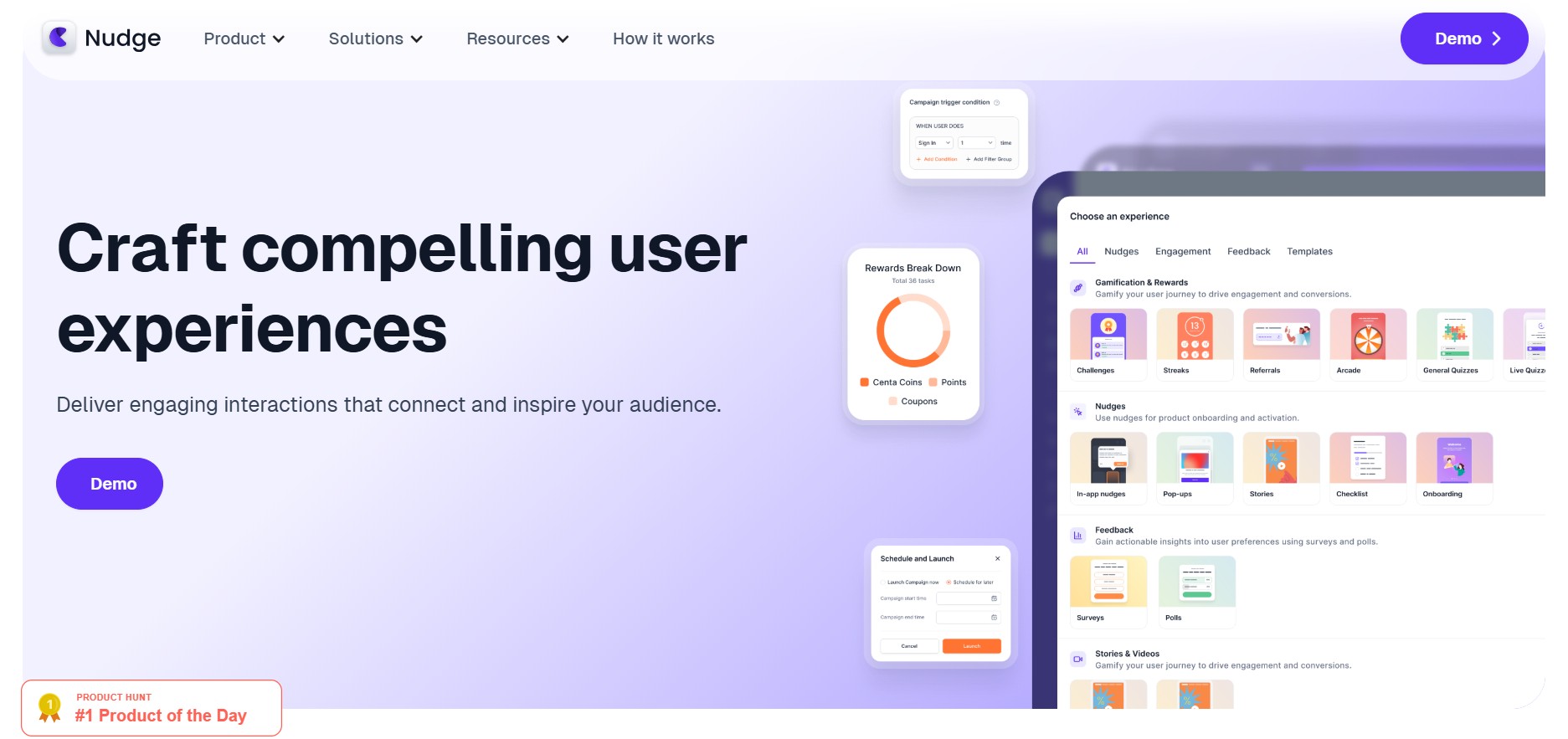
Nudge is one of the effective tools for customer journey mapping, designed to help you create visually appealing, interactive maps that capture the entire customer experience. This platform is easy to use, with a visual builder and user flow builder that allow you to design custom journeys and visualise them in a way that’s easy for all stakeholders to understand.
Key Features:
- Visual Builder: The visual builder lets you map out each stage of the customer journey using simple drag-and-drop tools. This makes it easy to create a flow of customer interactions.
- User Flow Builder: Nudge’s user flow builder helps you visualise the sequence of steps customers take as they interact with your business. This is great for understanding how customers navigate through different touchpoints.
- Personalised Nudges: Nudge allows businesses to create personalised nudges for their customers based on behavior, increasing the likelihood of customer engagement and conversions.
- Collaboration: Teams can collaborate in real-time, making it easier for different departments to work together to improve the customer journey.
2. Miro
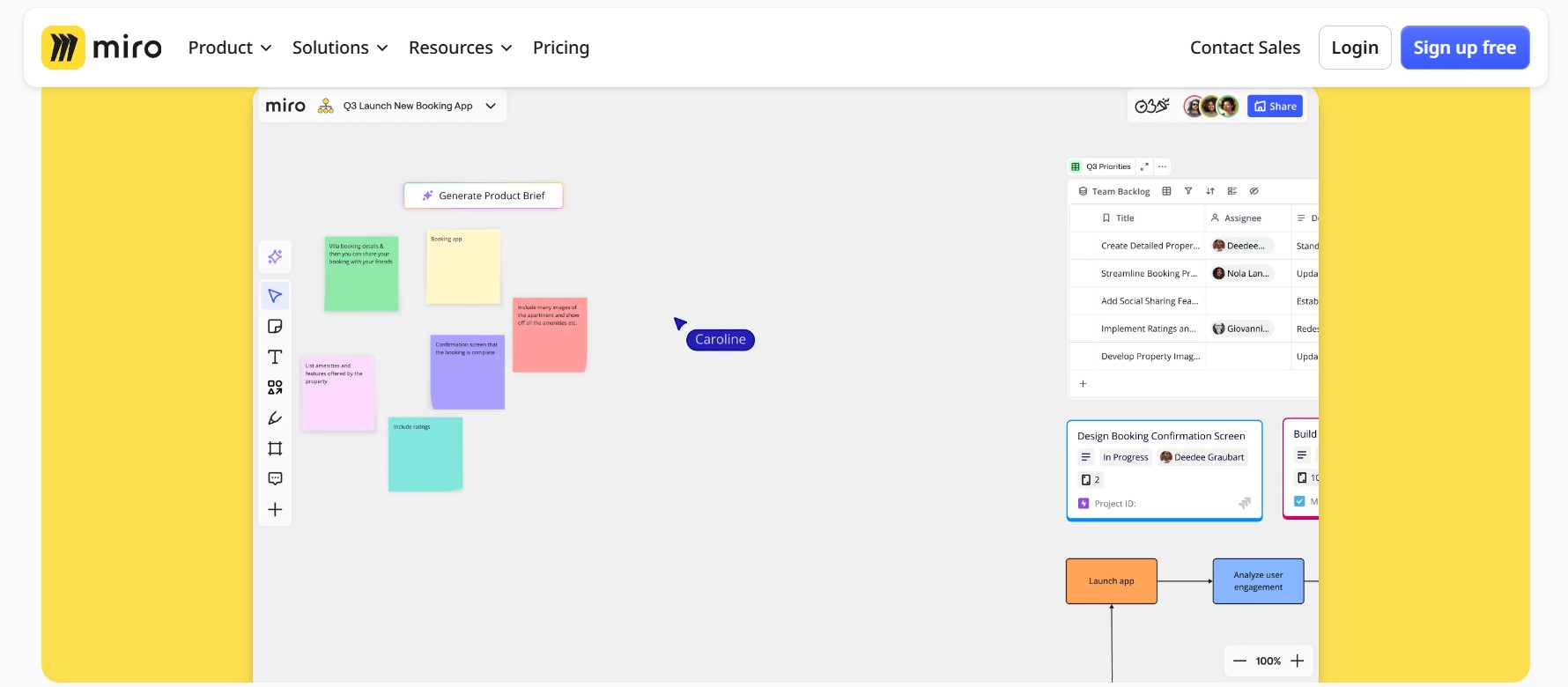
Miro is a versatile online collaboration and brainstorming platform that has become popular for customer journey mapping. It offers an intuitive canvas where teams can map out customer journeys, create diagrams, and collaborate on projects in real-time.
Key Features:
- Template Library: Miro has a wide range of templates, including those for customer journey mapping. These templates make it easy to get started and create professional-looking maps.
- Real-Time Collaboration: Multiple users can work on the same board simultaneously, making Miro ideal for team collaboration, whether your team is remote or in the office.
- Customisable Tools: Miro provides tools for adding sticky notes, comments, shapes, and arrows, giving you complete control over how your customer journey map looks.
- Integration: Miro integrates with various project management and communication tools like Slack, Google Drive, and Microsoft Teams, allowing for smooth workflows.
3. UXPressia
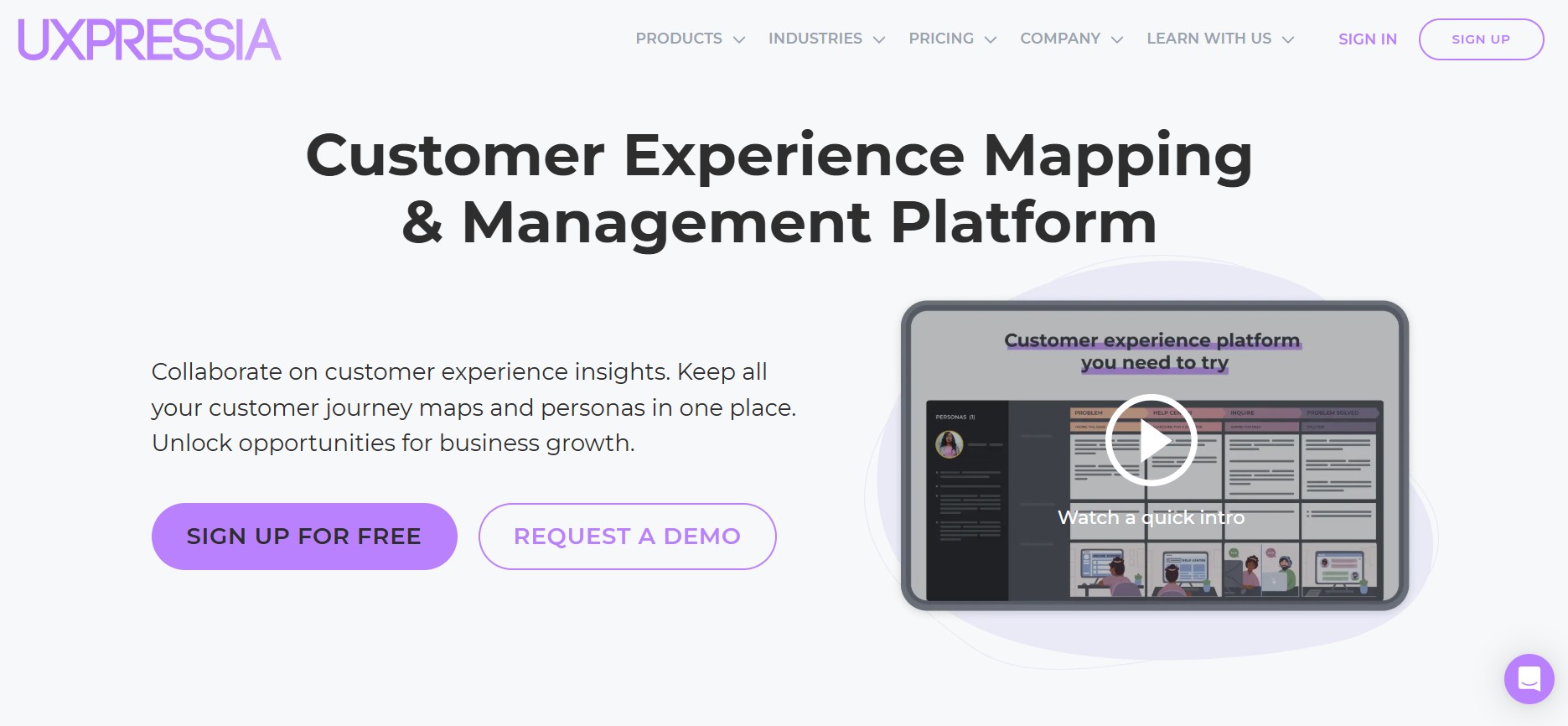
UXPressia is a specialised tool for creating customer journey maps, personas, and experience maps. It’s designed to help teams create detailed, visually appealing customer journey maps that reflect both the emotional and practical aspects of the customer experience.
Key Features:
- Persona Creation: UXPressia helps you build detailed personas alongside your customer journey maps, ensuring your maps are deeply rooted in real customer data.
- Emotion Mapping: One of the standout features of UXPressia is its focus on emotional mapping. You can track not just what customers do, but how they feel at each stage of the journey.
- Collaboration and Sharing: UXPressia makes it easy to collaborate with your team and share customer journey maps with stakeholders through simple sharing options and export formats.
- Customisable Templates: The platform offers customisable templates to help you map out every aspect of the customer journey, from touchpoints to emotions and actions.
4. Smaply
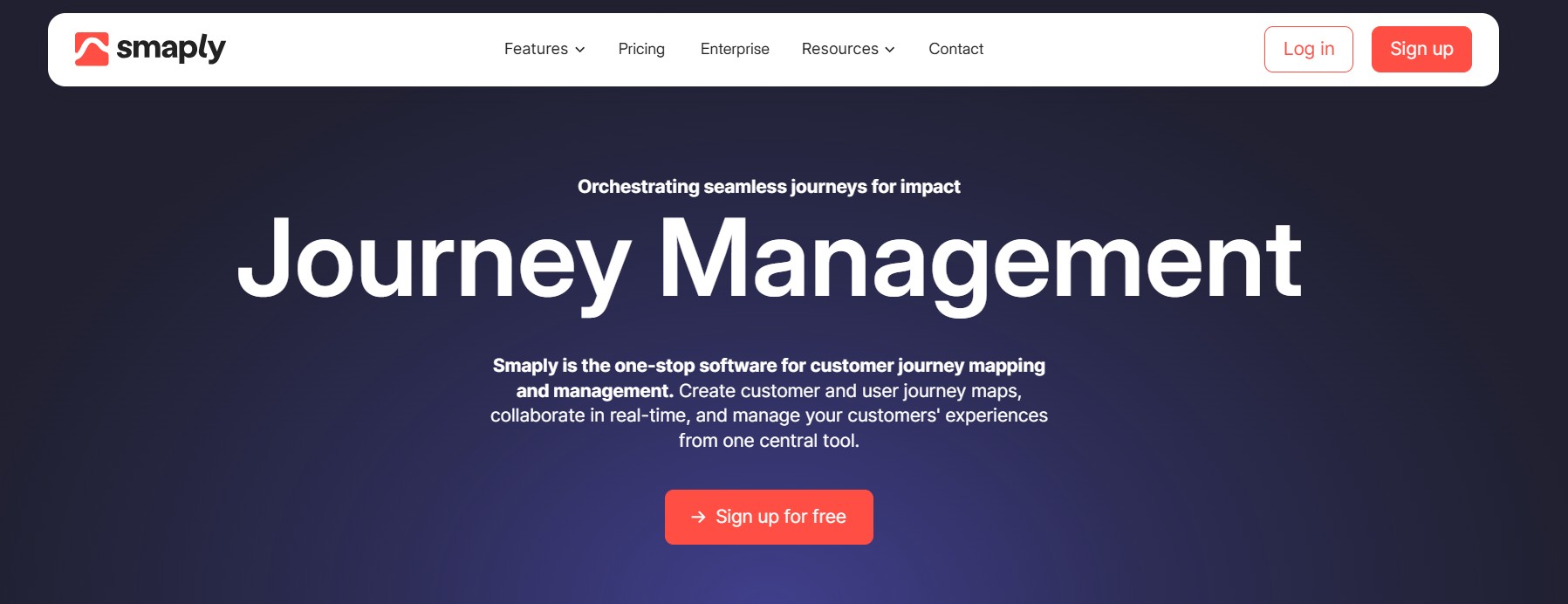
Smaply is another powerful customer journey mapping tool that focuses on creating professional, data-driven journey maps. It is designed for teams looking to build comprehensive, multi-stage journey maps that are easy to share and analyse.
Key Features:
- Journey Maps: Smaply’s core feature is its journey mapping functionality, which allows you to create customer journey maps with detailed stages, touchpoints, and emotions.
- Stakeholder Mapping: This feature helps identify key stakeholders who influence the customer journey. It’s useful for understanding the internal and external factors affecting customer interactions.
- Export and Share: Smaply allows you to export your maps into different formats and share them with stakeholders for feedback and collaboration.
- Integration: Smaply integrates with various data sources, enabling you to import customer data directly into your maps for a more comprehensive view.
5. Gliffy
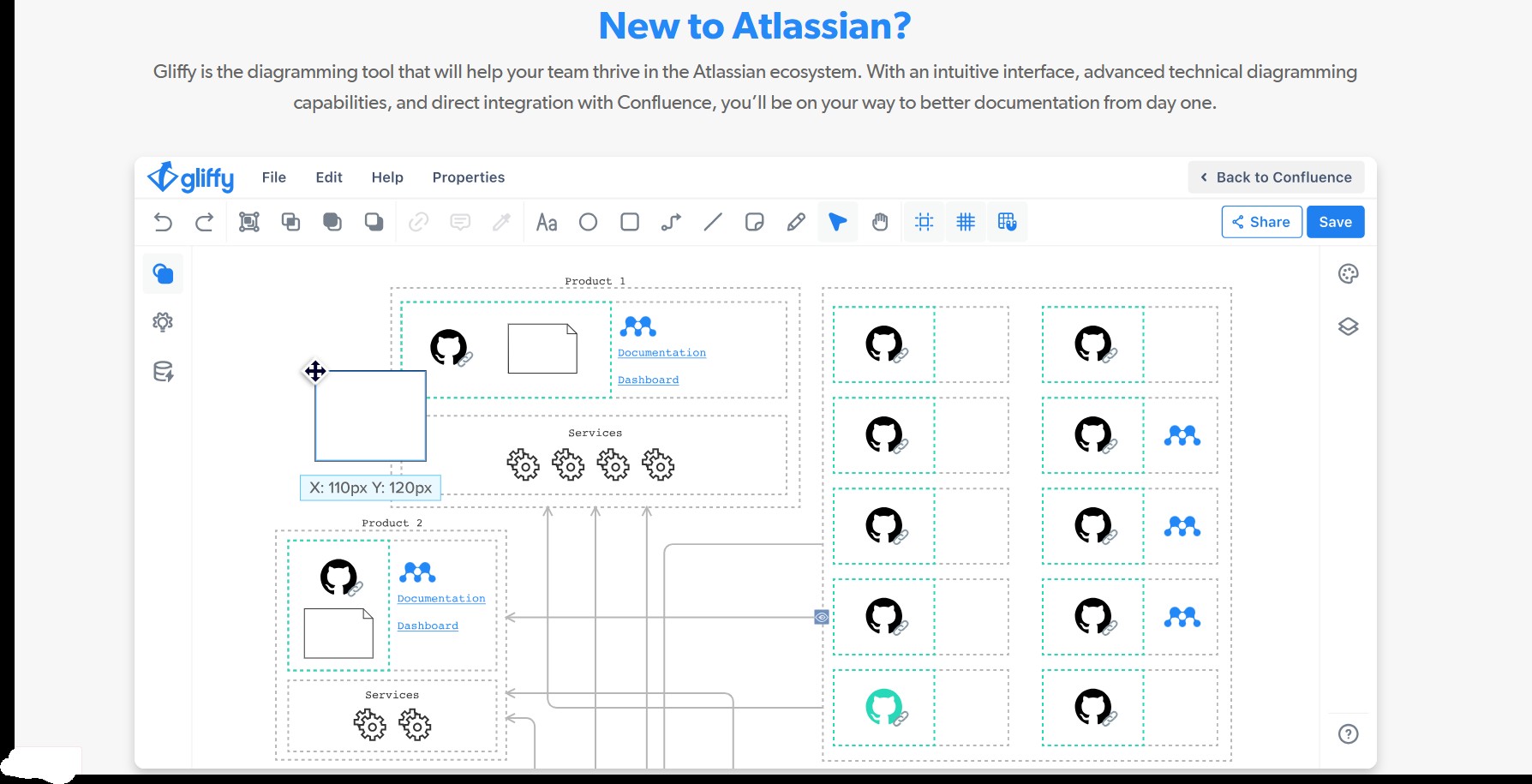
Gliffy is a diagramming tool that can be used for customer journey mapping. It’s easy to use and integrates with various project management tools, making it a good option for businesses that want to create simple, clear journey maps without a steep learning curve.
Key Features:
- Intuitive Interface: Gliffy’s drag-and-drop interface makes it easy to create customer journey maps, diagrams, and flowcharts without requiring advanced design skills.
- Collaboration: You can collaborate in real-time with your team, making it easy to refine journey maps and gather feedback.
- Integration: Gliffy integrates with Atlassian tools like Jira and Confluence, which is helpful for teams already using those platforms.
- Customisable Templates: The platform offers templates for a variety of diagrams, including customer journey maps, to help you get started quickly.
Conclusion
Customer journey mapping is an essential part of modern business strategy. It helps you understand your customers, improve their experience, and ultimately increase conversion rates and retention. Whether you’re a small startup or a large enterprise, there is a customer journey mapping tool that suits your needs. Book a demo with Nudge to focus on personalised user flows and nudging behaviour that can help you optimise the customer journey. With us, you can better understand your customer’s journey, improve your processes, and create a more seamless and engaging experience for your audience.








